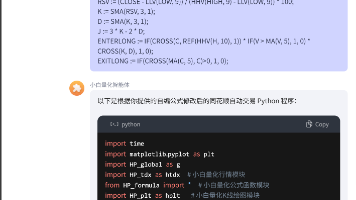javascript 中Object.entries
参考:https://developer.mozilla.org/zh-CN/docs/Web/JavaScript/Reference/Global_Objects/Object/entriesObject.entries()方法返回一个给定对象自身可枚举属性的键值对数组,其排列与使用for...in循环遍历该对象时返回的顺序一致(区别在于 for-in 循环还会枚举原型链中的属性)。例子:co
参考:https://developer.mozilla.org/zh-CN/docs/Web/JavaScript/Reference/Global_Objects/Object/entries
Object.entries()方法返回一个给定对象自身可枚举属性的键值对数组,其排列与使用 for...in 循环遍历该对象时返回的顺序一致(区别在于 for-in 循环还会枚举原型链中的属性)。
例子:
const log = console.log;
function Animal(name) {
this.name = name;
}
Animal.prototype.run = function() {
console.log(`${this.name} run`);
}
function Cat(name) {
Animal.call(this, name);
this.age = 8;
}
Cat.prototype = Object.create(Animal.prototype);
Cat.prototype.constructor = Cat;
let c = new Cat("miao");
log("c = ", c);
for (let [k, v] of Object.entries(c)) { //不枚举原型中的属性
log("entries k = ", k, ", v = ", v);
}
for (let k in c) {
log("in k = ", k, ", v = ", c[k]);
}
c.run();结果:
$ node for.js
c = Cat { name: 'miao', age: 8 }
entries k = name , v = miao
entries k = age , v = 8
in k = name , v = miao
in k = age , v = 8
in k = constructor , v = [Function: Cat]
in k = run , v = [Function]
miao run
例子:
const object1 = {
a: 'somestring',
b: 42
};
for (const [key, value] of Object.entries(object1)) {
console.log(`${key}: ${value}`);
}
// expected output:
// "a: somestring"
// "b: 42"
// order is not guaranteed
语法
Object.entries(obj)参数
obj
可以返回其可枚举属性的键值对的对象。
返回值
给定对象自身可枚举属性的键值对数组。
描述
Object.entries()返回一个数组,其元素是与直接在object上找到的可枚举属性键值对相对应的数组。属性的顺序与通过手动循环对象的属性值所给出的顺序相同。
示例
const obj = { foo: 'bar', baz: 42 };
console.log(Object.entries(obj)); // [ ['foo', 'bar'], ['baz', 42] ]
// array like object
const obj = { 0: 'a', 1: 'b', 2: 'c' };
console.log(Object.entries(obj)); // [ ['0', 'a'], ['1', 'b'], ['2', 'c'] ]
// array like object with random key ordering
const anObj = { 100: 'a', 2: 'b', 7: 'c' };
console.log(Object.entries(anObj)); // [ ['2', 'b'], ['7', 'c'], ['100', 'a'] ]
// getFoo is property which isn't enumerable
const myObj = Object.create({}, { getFoo: { value() { return this.foo; } } });
myObj.foo = 'bar';
console.log(Object.entries(myObj)); // [ ['foo', 'bar'] ]
// non-object argument will be coerced to an object
console.log(Object.entries('foo')); // [ ['0', 'f'], ['1', 'o'], ['2', 'o'] ]
// iterate through key-value gracefully
const obj = { a: 5, b: 7, c: 9 };
for (const [key, value] of Object.entries(obj)) {
console.log(`${key} ${value}`); // "a 5", "b 7", "c 9"
}
// Or, using array extras
Object.entries(obj).forEach(([key, value]) => {
console.log(`${key} ${value}`); // "a 5", "b 7", "c 9"
});将Object转换为Map
new Map() 构造函数接受一个可迭代的entries。借助Object.entries方法你可以很容易的将Object转换为Map:
var obj = { foo: "bar", baz: 42 };
var map = new Map(Object.entries(obj));
console.log(map); // Map { foo: "bar", baz: 42 }Polyfill
要在较旧环境中添加兼容的Object.entries支持,你可以在 tc39/proposal-object-values-entries 中找到Object.entries的示例(如果你不需要任何对IE的支持),在 es-shims/Object.entries 资料库中的一个polyfill,或者你可以使用下面列出的简易 polyfill。
if (!Object.entries)
Object.entries = function( obj ){
var ownProps = Object.keys( obj ),
i = ownProps.length,
resArray = new Array(i); // preallocate the Array
while (i--)
resArray[i] = [ownProps[i], obj[ownProps[i]]];
return resArray;
};对于上述 polyfill 代码片段,如果你需要 IE9 以下的支持,那么你还需要一个 Object.keys polyfill(如 Object.keys页面上的)。
更多推荐
 已为社区贡献2条内容
已为社区贡献2条内容









所有评论(0)